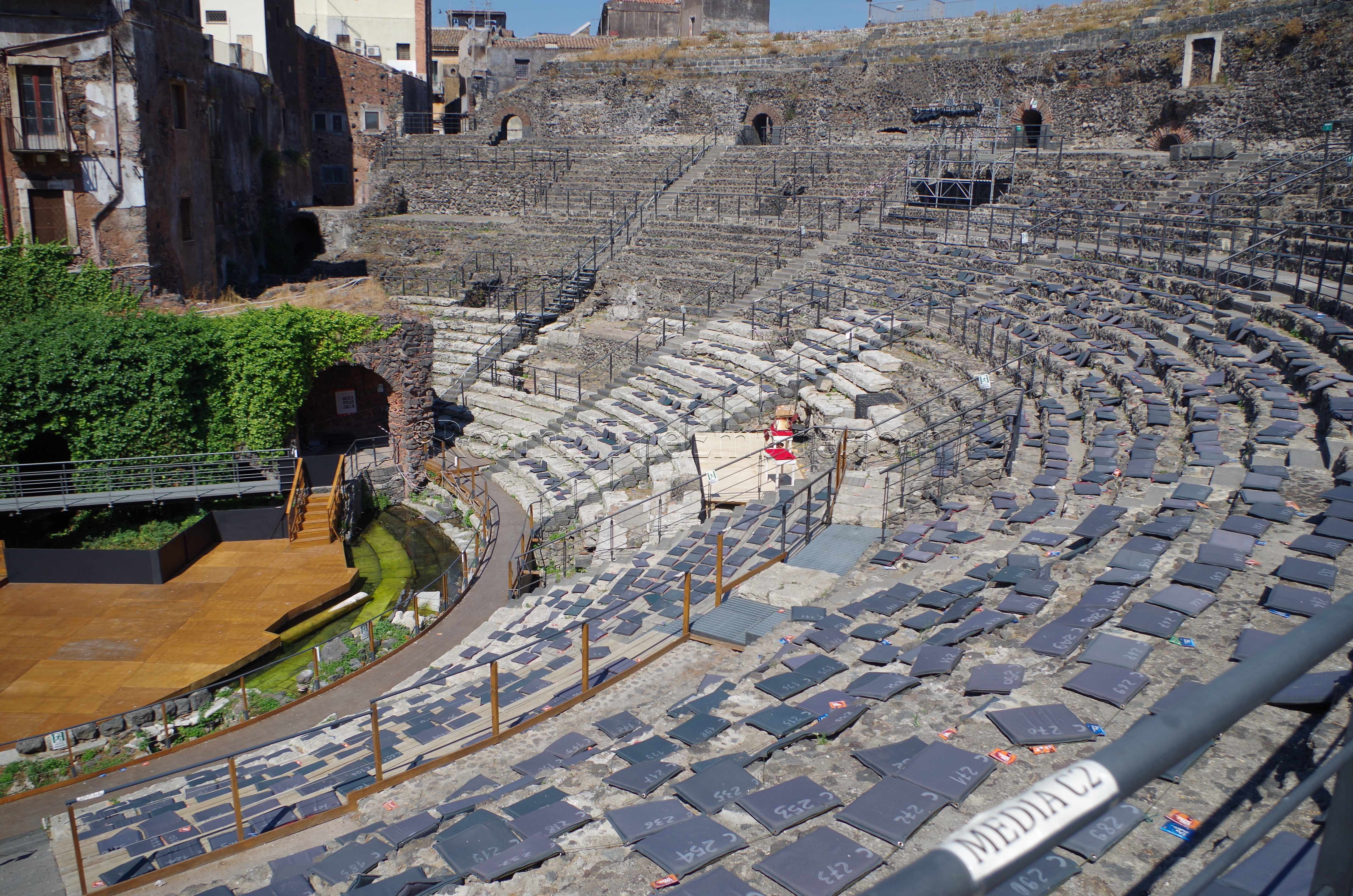
The theater (along with the odeon) is arguably the centerpiece of the Roman monuments of Catana; it is certainly the most completely excavated and well-preserved of the Roman remains here. It is located at Via Vittorio Emanuele II 266. The theater is open every day from 9:00 to 17:00 and the cost of admission is 6 Euros. Admission is free on the first Sunday of the month, and though I didn’t visit on that day, I expect that, as is the case with archaeological sites all over Italy that offer a free day, it is quite crowded.
There are two small museum/antiquarium areas on the site of the theater. The first is at the entry building, though the artifacts are meant to be viewed when leaving the site rather than entering. These are mostly architectural fragments from the theater, as well as a few sculptural pieces found in the area of the theater. In the northeast corner of the complex, there is also the Casa Liberti, a later residence that houses some smaller artifacts such as ceramics, coins, and even some glass. On the ground floor of the Casa Liberti, there are also the remains of the Greek city walls, dated to about the second half of the 7th century or first half of the 6th century BCE. Some of the structure of the amphitheater, into which the house was built, is also visible in this area.
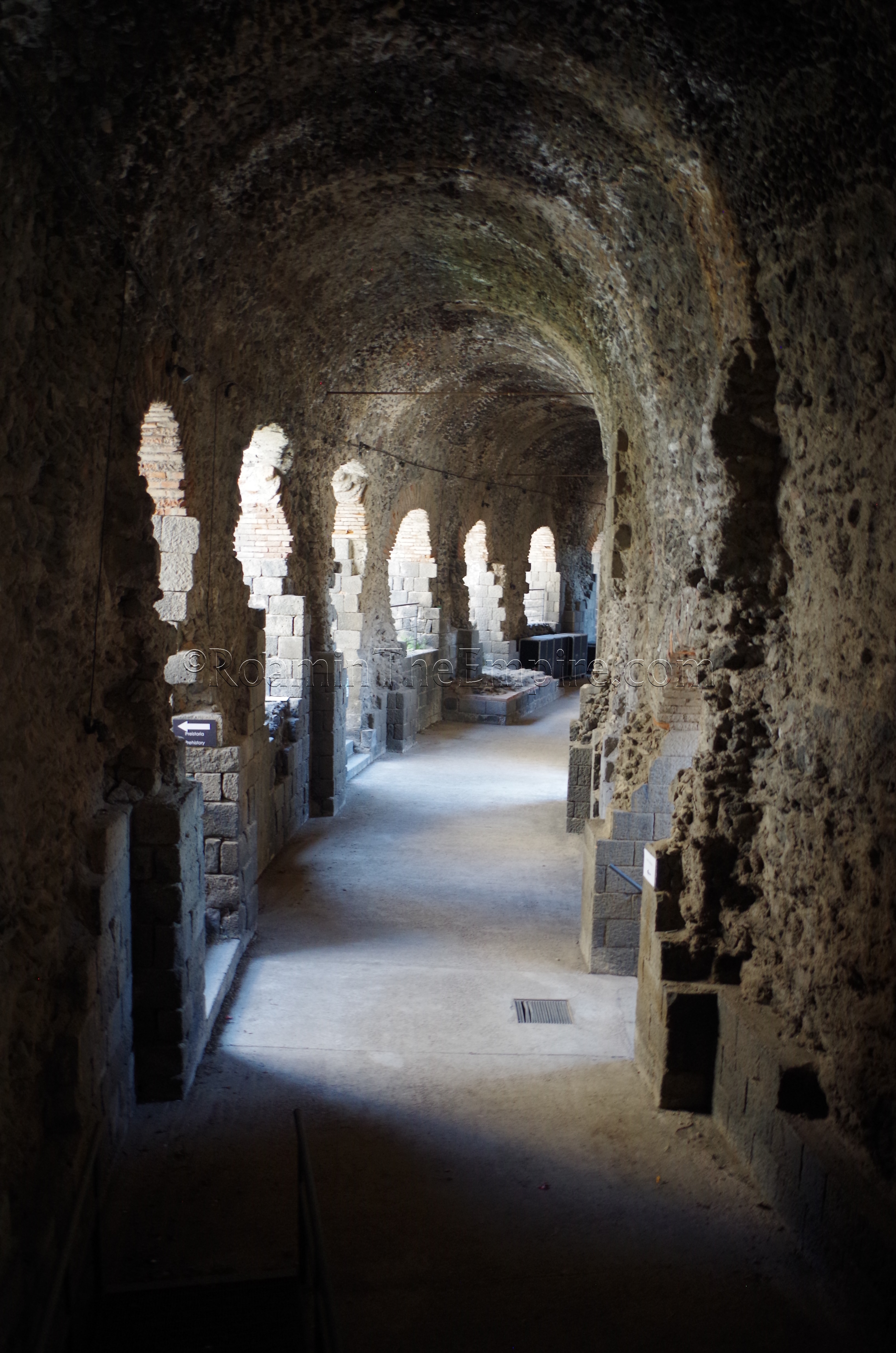
Again, like many theaters in Sicily, there seems to have been a Greek theater originally in this very location, dating to perhaps the 5th or 4th century BCE. It is theorized that it was at this Greek theater that Alcibiades gave his speech in favor of Catan hosting the Athenian army that had come to wage war against Syracuse, though there is no hard evidence to confirm that. This Greek theater seems to have first been restored in the 1st century CE, perhaps improvement linked to the establishment of the colony under Augustus. More significant improvements were made in the 2nd century CE, possibly coinciding with Hadrian’s visit to the city, including a third ambulatory and the addition of the highest level of the cavea, expanding the seating to about 7,000 spectators. Further alterations occurred in late antiquity when the theater was modified to serve as a shallow kolymbetra for the performance of aquatic tetimimi spectacles. This is what the current level of water present in the orchestra of the theater is meant to exemplify, and changes included alterations to the orchestra area as well as the installation of a large cistern under the ima cavea.
Most of the area of the theater structure is open for viewing. There are a few areas that are closed off, but for the most part, one can wander around most of it. There are modern performances held there, so, there may be equipment present, and there is a certain amount of restoration done to the cavea to allow for seating. A large staircase in the northwest area of the theater, between the theater and odeon is of particular interest as it is believed to possibly be associated with a road that was originally open, but was later covered by part of the theater in the 2nd century CE expansions. It is also worth noting that there appears to be game board carved into a number of the steps on this staircase.
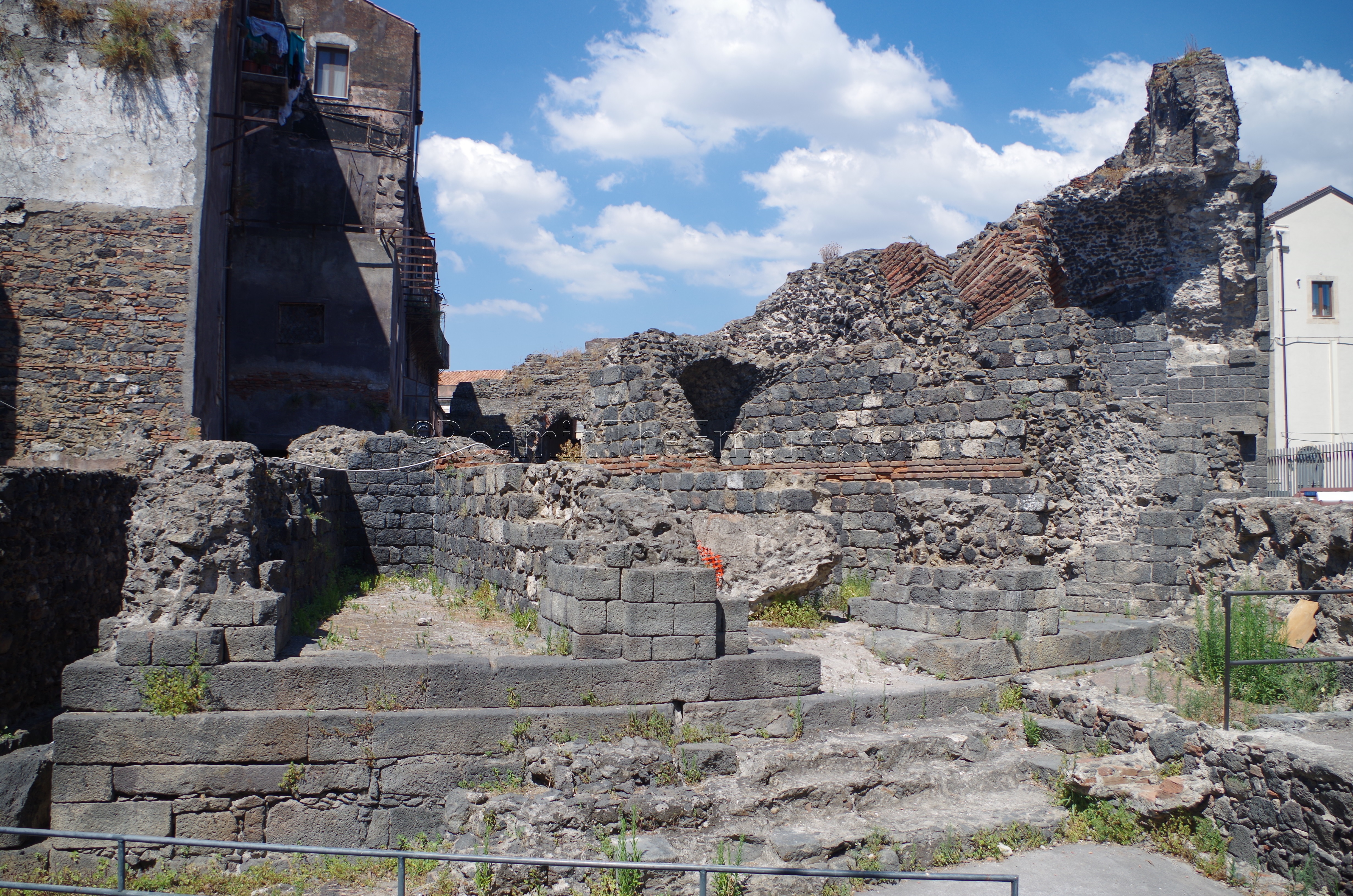
Immediately to the west is Catana’s odeon, probably built during the 2nd century CE expansions and monumentalization of the area. The odeon had a capacity of about 1,500 and much of it remained free standing in the interceding years between now and its construction, unlike the theater, which was subject to a great deal of later constructions on top of it. Unfortunately, though, the odeon is largely closed off, possibly for restorations, and is only visible from the outside.
Overall, it’s certainly worth the stop. There are many informative signs in both English and Italian. It is a bit disappointing that the interior of the odeon is not able to be visited, but, that shouldn’t serve as a real deterrent to most, as the theater itself is well worth the price of admission, and the presentation is done quite well.
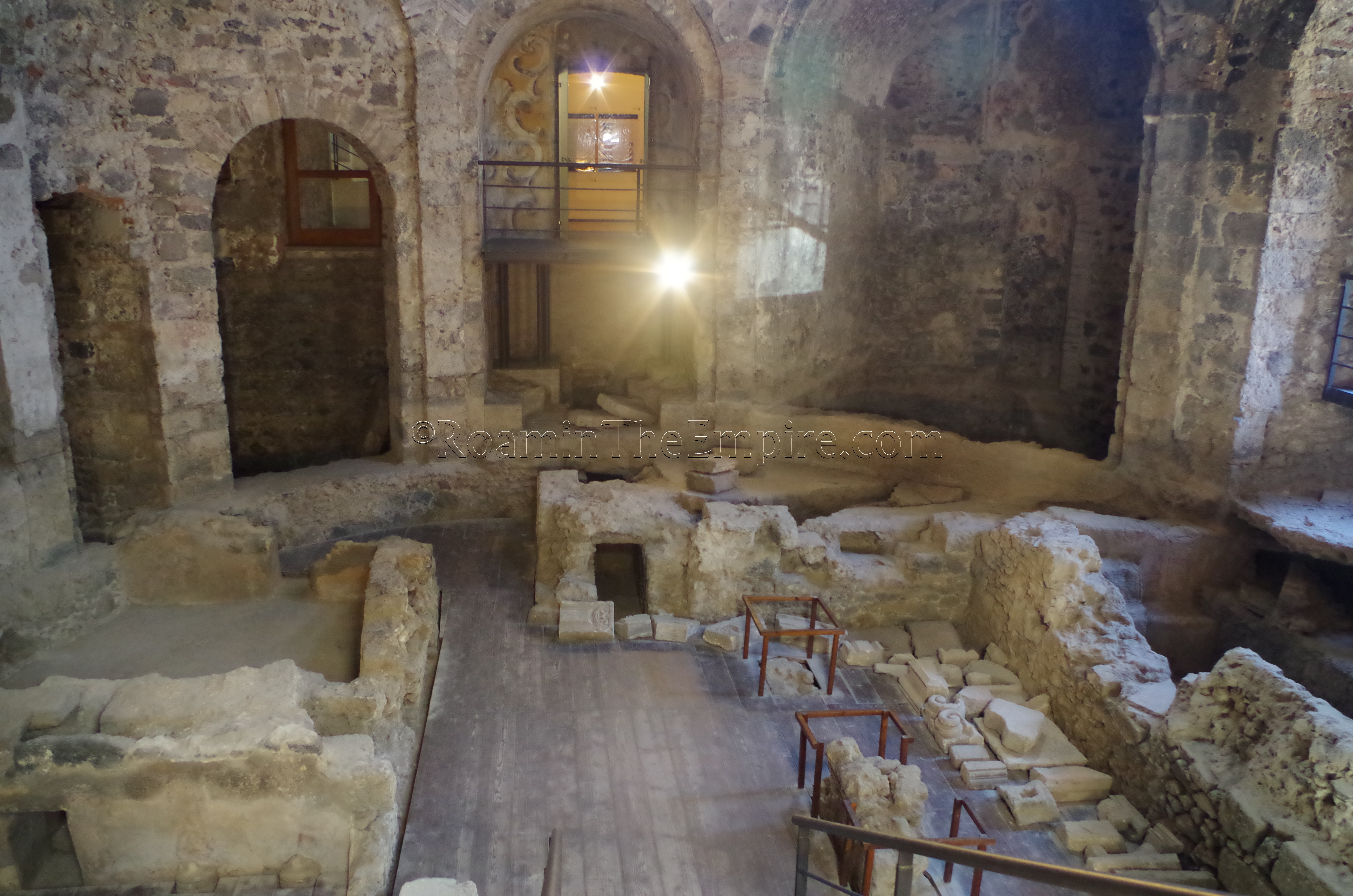
To the northwest are the Terme Romane della Rotonda, with the entrance at the corner of Via della Mecca and Via Marino. The remains of this bathing complex are only open on Wednesday and Sunday from 9:00 to 13:00 and admission is free. The rotunda that gives the baths their name is the caldarium and frigidarium (as well as possibly a number of other functions during different periods of the life of the baths) of a 1st to 2nd century CE bathing complex, which was, in the 6th century CE, converted into a church. An allied bombing of the area in 1943 lead to the discovery of the remains in the southern, open air part of the site, while refurbishments in the rotunda at the same time lead to the discovery of Roman structures within the church building and to the north.
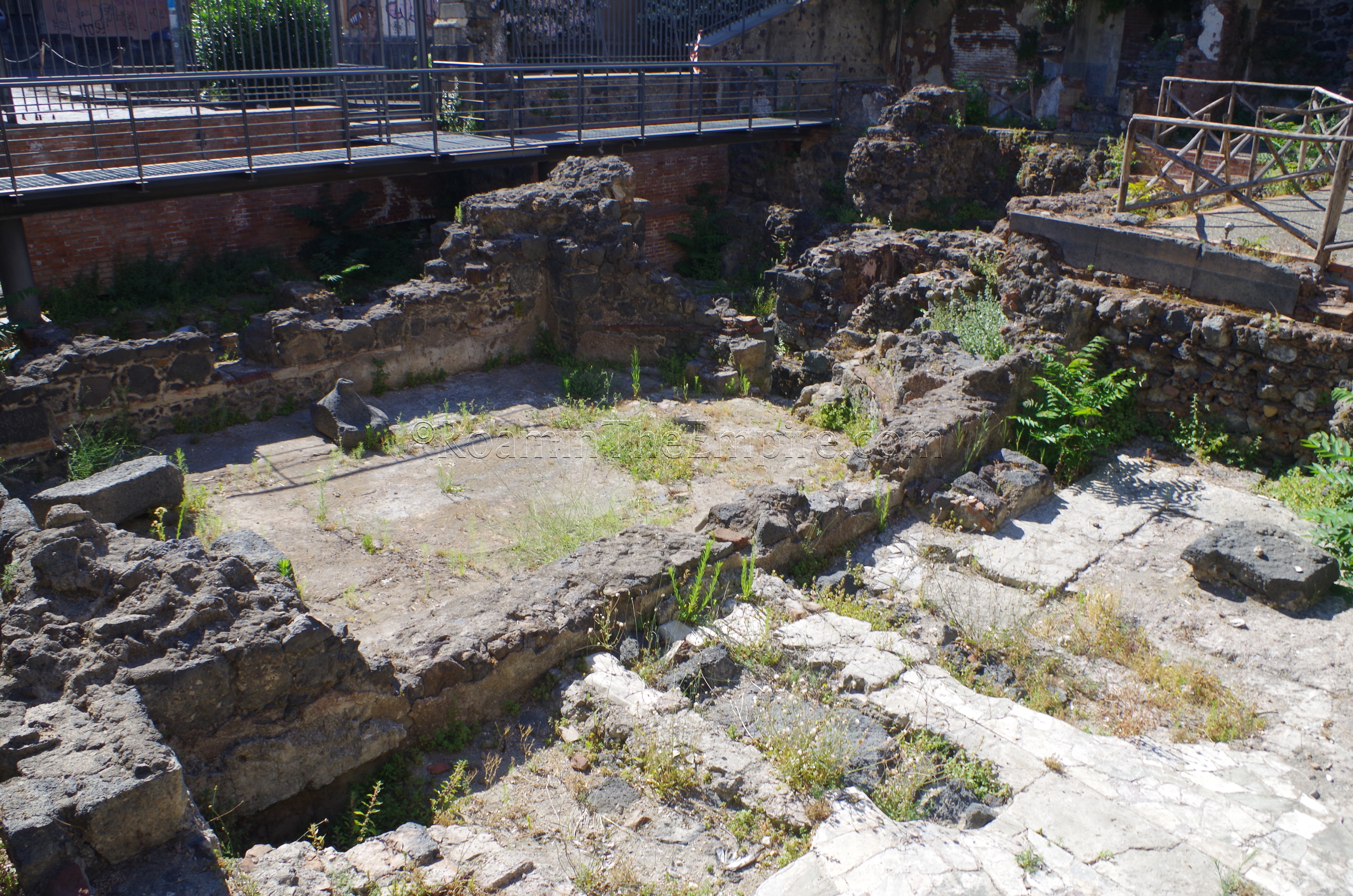
The area north of the rotunda building has been identified as being a cistern as well as the entry area of the bathing complex. To the south of the rotunda building is the remainder of the 1st/2nd century phase of the baths which possibly included the tepidarium and a number of laconicum type rooms. There are a few signs in English and Italian inside the rotunda and the adjacent entry to the site, but, unfortunately, while they did provide a little bit of overall information, seemed more concerned with lauding the recent restoration works than giving visitors very basic information about the baths, and more particularly, pointing out what they were actually looking at. While I was interested in the restoration works, and it would have made wonderful depth information, I think a basic plan of the baths with labeled structures would have went a long way in making it more interesting and accessible to the average tourist. It is certainly worth a visit; quite a few frescos from the church are also preserved in the rotunda. The price is definitely right, but the odd hours do make it difficult to visit; the odds of a tourist stumbling upon it while its actually open are pretty low, though I do completely understand and acknowledge why the hours are the way they are (the need to rotate the limited staff around to allow as many sites as possible be open at least a few times a week).
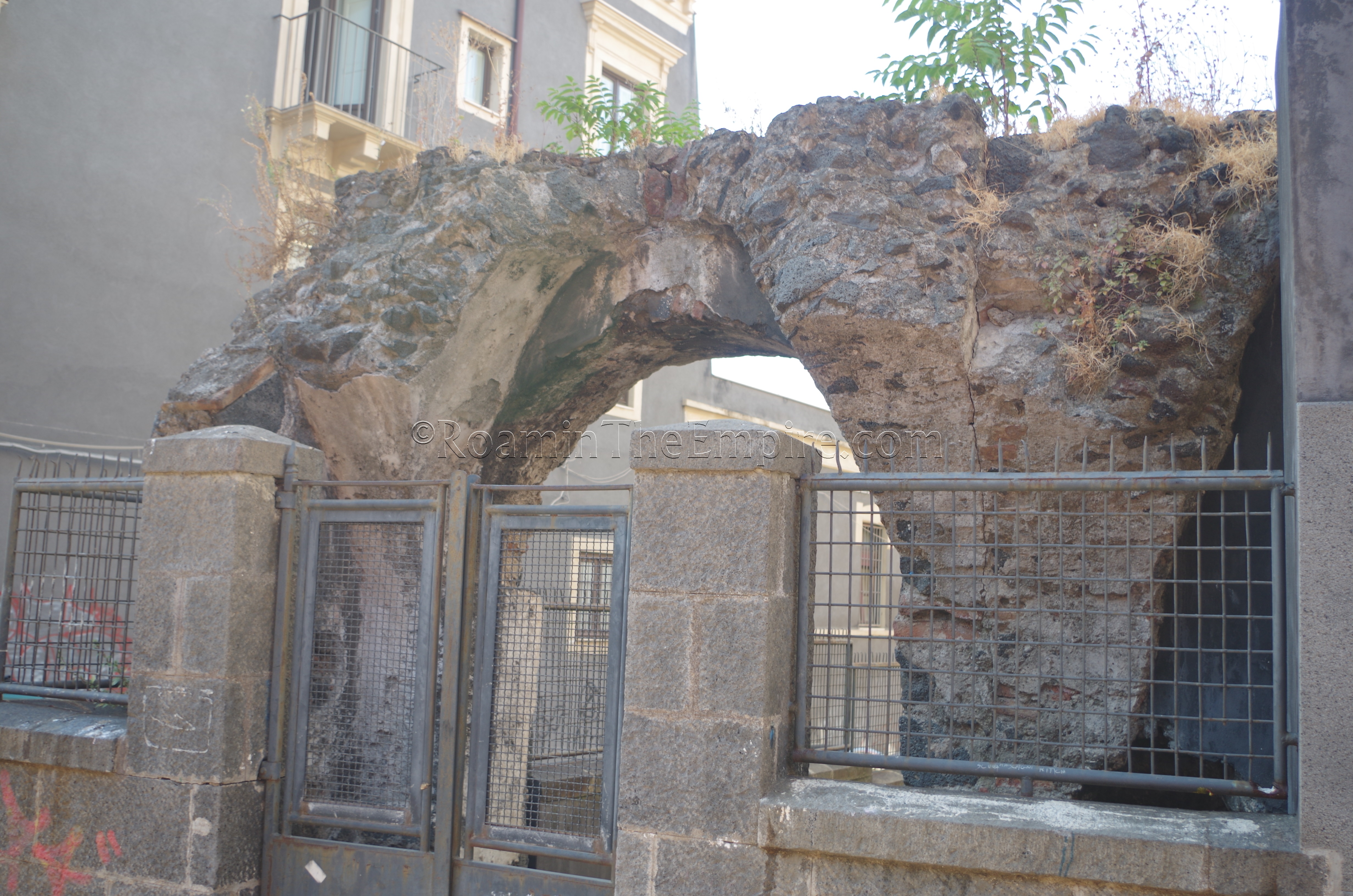
Just north of the the Terme Romane della Rotonda, at the southwest corner of Via Geraldo Cleminti and Via Minoritelli are a few arches, possibly belonging to the spur of the aqueduct that carried water to the baths, which is mentioned in the signage at the site as having been carried down Via Minoritelli to the cistern in the northern part of the baths. The front side of the arches does show some signs of vaulting, though, so they are likely associated with some other building, though the vaulting may be a later addition.
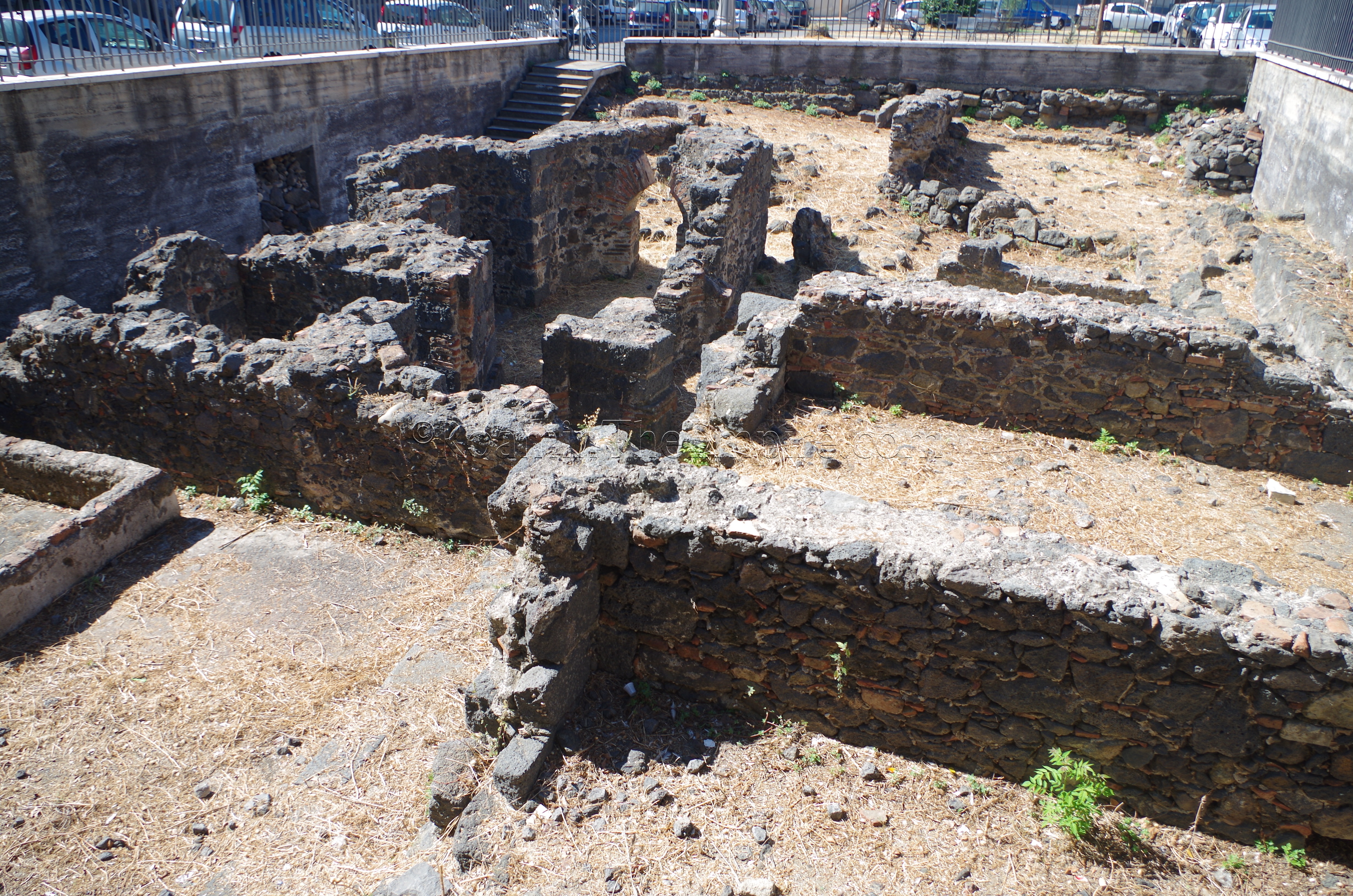
About 150 meters due west of the baths is Piazza Dante Alighieri, in front of the imposing Chiesa di San Nicolò l’Arena. Just south of this are a small set of remains, the Terme Romane di Piazza Dante. There isn’t any information on-site, other than the name, but it is apparently the remains of the heated areas of a small bathing complex associated with a private house. Not much of the form of the baths is really discernible, though there is most of an intact arch, giving a little bit of a glimpse into the layout, but not much. I evidently visited at just the right time, as the remains are said to typically be in a state of overgrowth, but had been cleaned up for the G7 summit in nearby Taormina that had just concluded prior to my arrival.
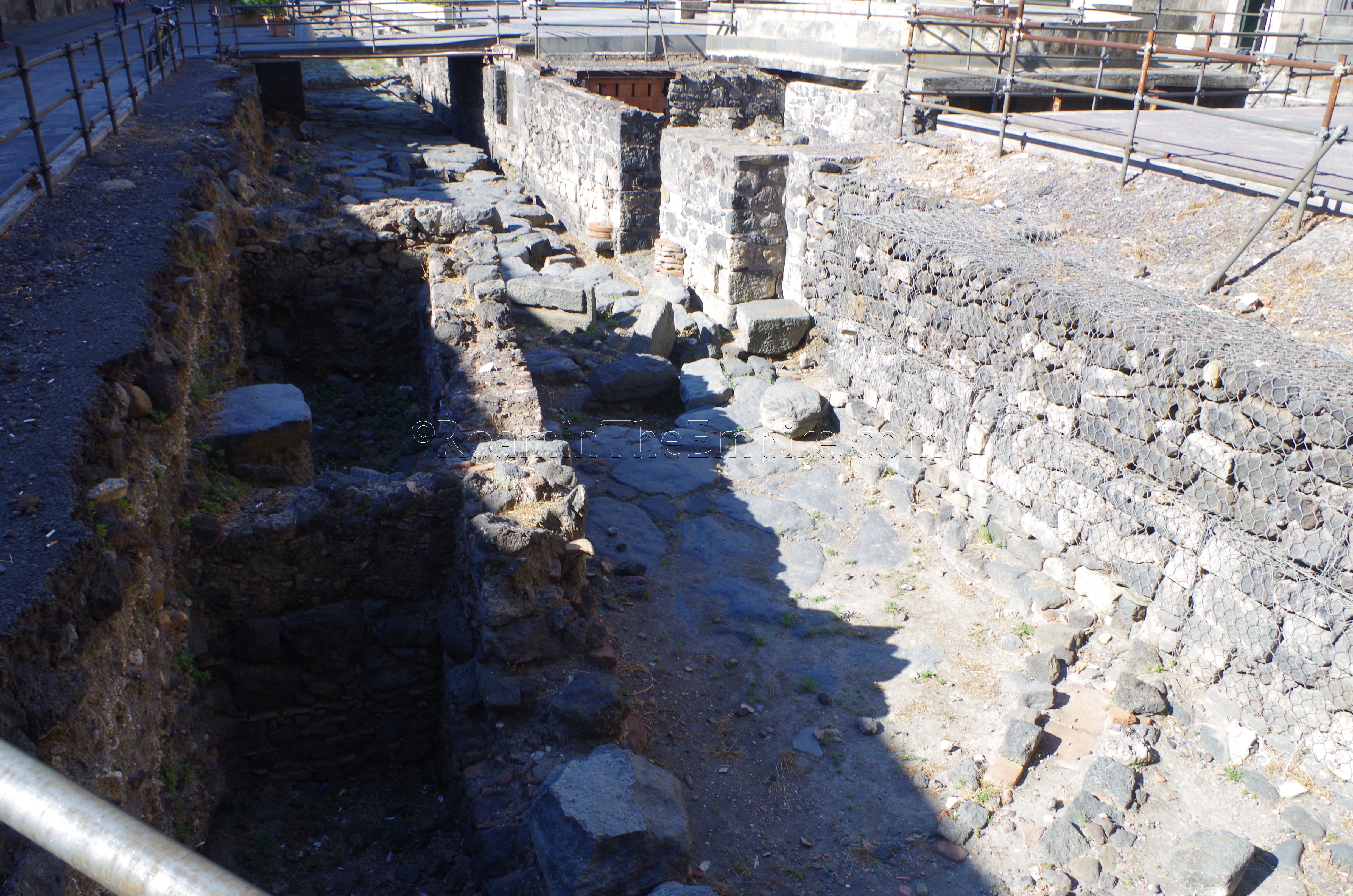
Just to the west of the Terme Romane di Piazza Dante is the Monastero dei Benedettini di San Nicolò L’Arena, now part of the grounds of the University of Catania. Right inside the entrance is a stretch of excavated remains of a Roman cardo, as well as some associated frontage structures to the road, perhaps housing structures, though there honestly isn’t a whole lot of information that seems to be available. It is generally not more than a meter off the road that is excavated and on display, so, not much is visible of the abutting structures.
There are two other sets of remains on the grounds, neither of which is really publicly visible. Part of the decumanus maximus runs under some classrooms on the south side of the monastery, but that part is not open to the general public. The second set are the remains of a Roman domus in the newspaper library of the university. While this is not just generally open, it can be visited as part of a guided tour of the monastery. Immediately to the right after entering the gateway off Piazza Dante, there is a cultural office where guided visits can be booked. Tours run every day, once an hour between 9:00 and 17:00, and the cost is 7 Euros. The tour lasts about an hour and a half, and I was fortunate enough to have a guide that spoke very good English and was willing to take a little time explain things to me (the rest of the group spoke Italian, so the general talk was given in Italian, only pieces of which I was able to pick up), but that experience is certainly variable depending on the guide.
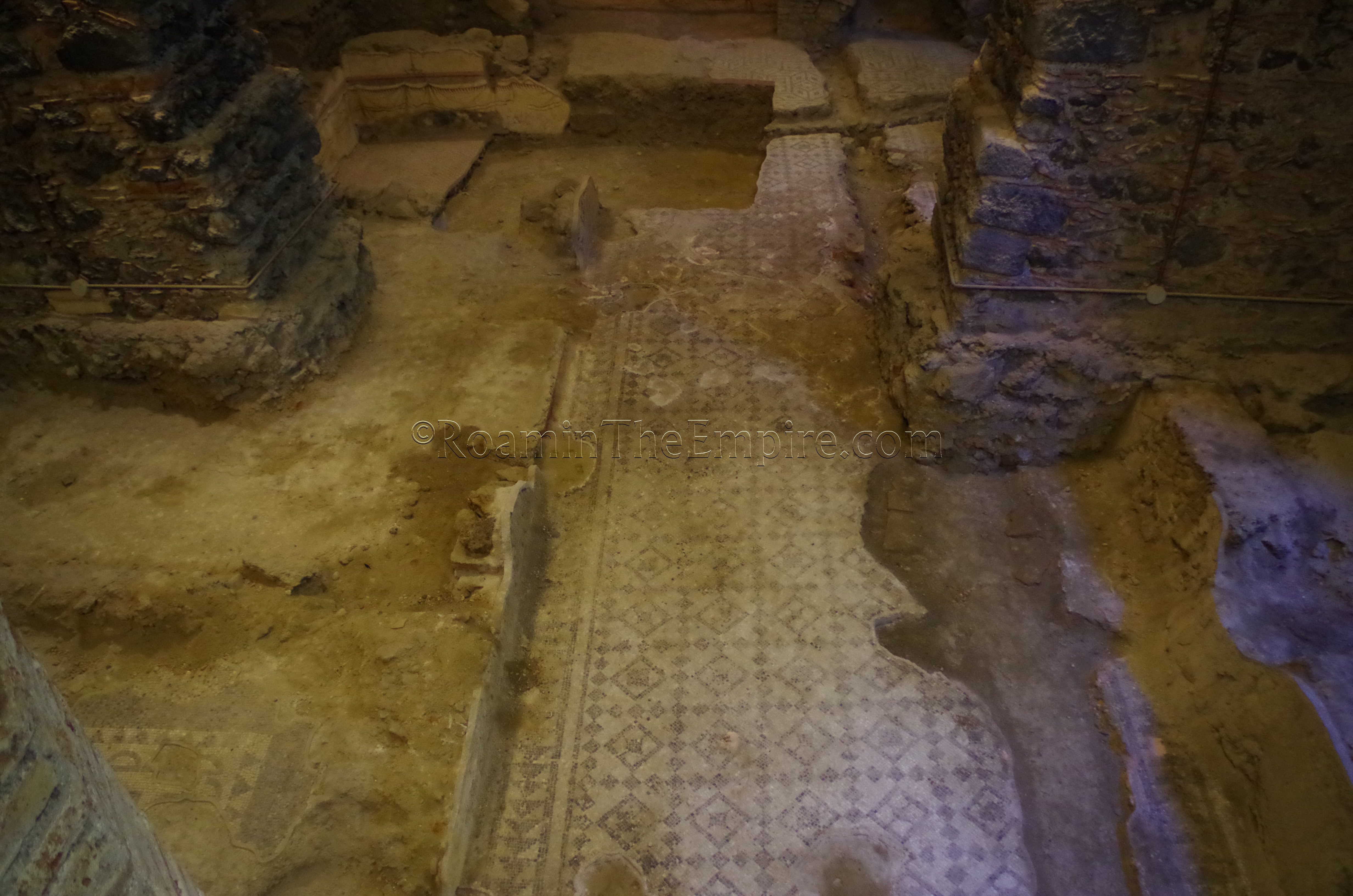
For an hour and a half guided tour through some interesting parts of the monastery, it was well worth the price. The domus is very nicely preserved with some intact wall painting and mosaic. There’s not much information on site about it, but, since it is a guided tour in which the guide explains, this isn’t altogether surprising. What remains is mostly the peristyle and some adjacent structures, and the dating puts it in the imperial period, probably around the 1st or 2nd centuries CE. The domus itself is nearly worth the price, but, with everything else on the tour, it’s definitely worth the price.
Just to the north of the monastery, north also of the associated church, is another section of the University of Catania. The Palazzo Ingrassia, at Via Biblioteca 36, houses the university’s archaeological museum, which is on the ground floor, just to the left after entering the building. The museum, staffed by students, is only open Monday, Wednesday, and Friday between 9:00 and 13:00, and there is no charge for entrance. It is a decent sized collection for what it is, but there’s not much in the way of Roman material aside from a few fragments of inscriptions. The bulk of the viewable collection is made up of Greek/Hellenistic ceramics as well as a few pieces from beyond Sicily. There looked to be some larger sculptural pieces on display down the hall from the museum, but, I was told that I was not allowed to go look at those.
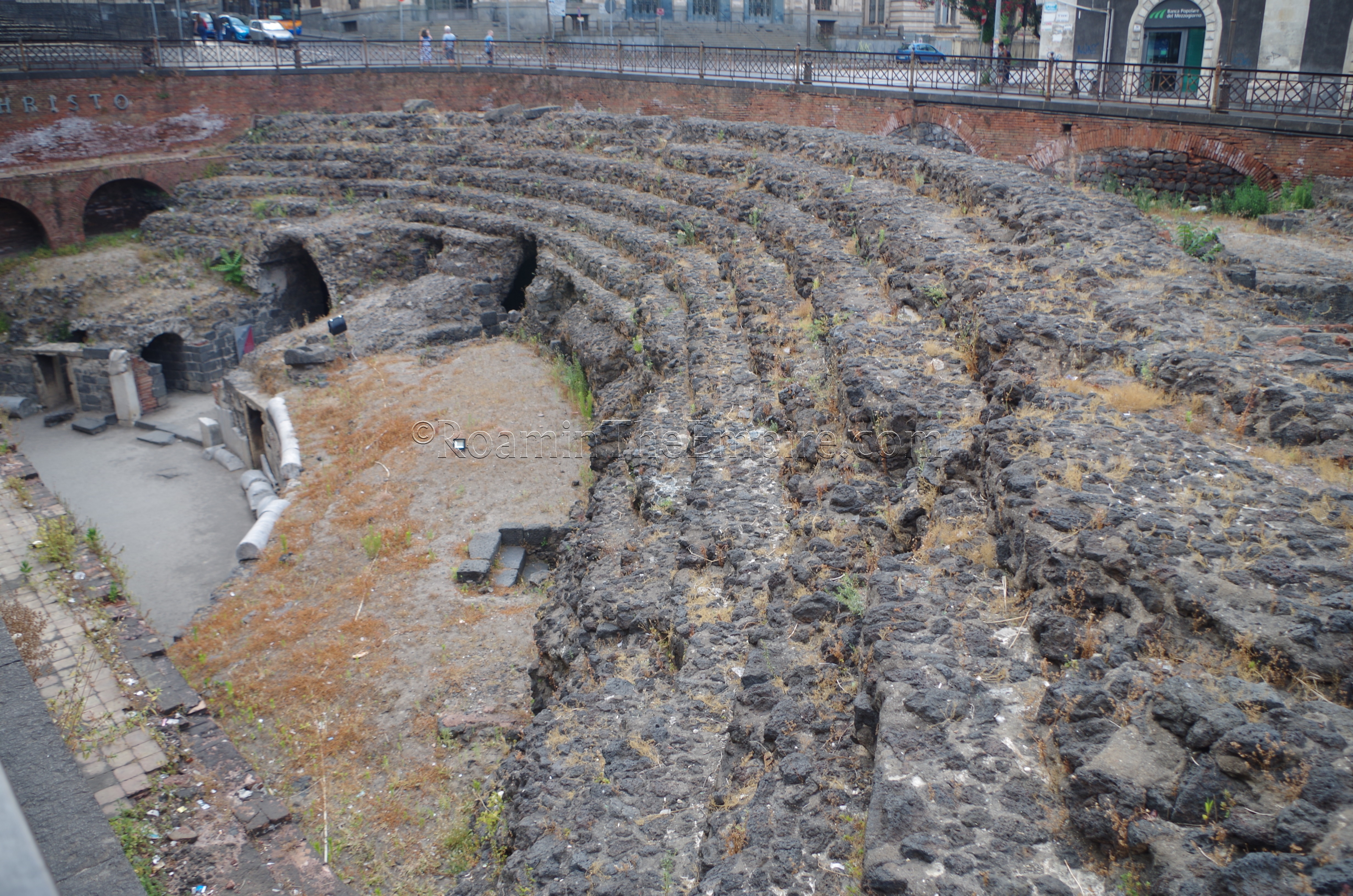
Up a bit further north at Piazza Stesicorco, are the remains of the amphitheater of Catana, of which only about the northeastern quarter is visible. The amphitheater is theoretically open daily between 9:00 and 13:00 and 14:30 and 19:00, but in my experience, this was not the case. I visited the amphitheater on three occasions during these times, and only on the third was the amphitheater actually open. A lot of what remains here can be viewed from the piazza surrounding it, of course, but, entry allows one to go down and walk through the corridors and out on to the actual arena portion. Admission to the amphitheater is free.
The amphitheater, built in the 2nd century CE as part of the monumental improvements to the city that also expanded the theater, was originally rather small, including on the first ambulatory and set of cavea. An expansion in the 3rd century CE, though, enlarged it threefold, making it the largest in Sicily and among one of the larger amphitheaters in the empire. The calculated capacity is about 15,000, but wooden expansions to the seating could apparently double that number. By the 4th century CE, the amphitheater had fallen largely into disuse and was beginning to be quarried for materials. There is also evidence to suggest that there were dwellings being made among the arcades of the ambulatories. There are quite a few informative signs in both English and Italian.
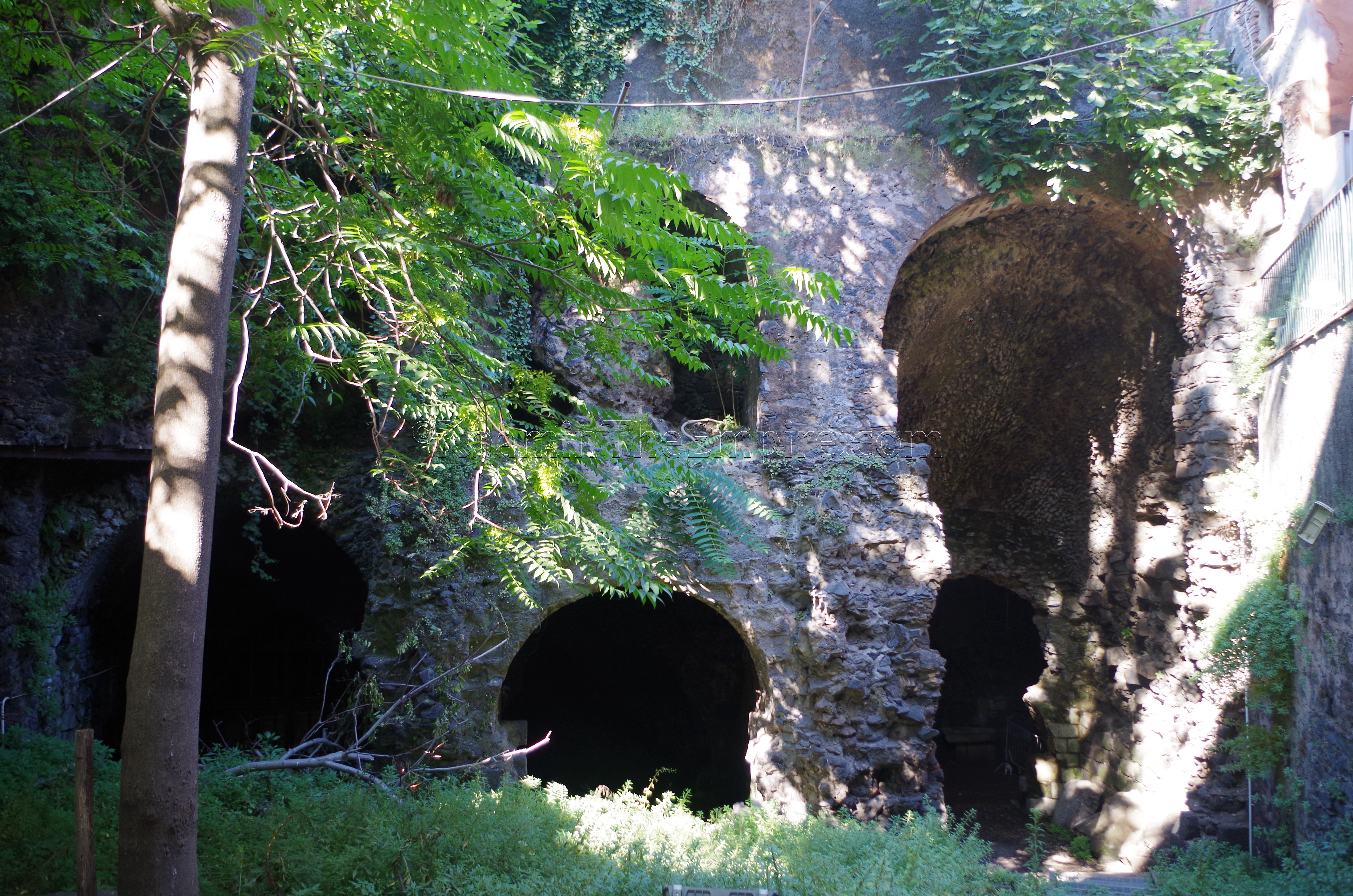
There are vestiges of the amphitheater elsewhere in the immediate area. The Chiesa di San Biagio o Sant’Agata alla Fornace on the west side of Piazza Stesicoro supposedly contains some remains of the amphitheater, but, despite my best efforts, I was never able to get into the church. It supposedly is open from 16:30 to 18:30, but, despite a few attempts, it was not open during these times. To the south of Piazza Stesicoro, though, there are some visible remains down a little side street, Vico Anfiteatro, off Via Alessandro Manzoni. A sign on the latter notes the presence of the remains. A few arcades of the southwest corner of the amphitheater are visible in a small gated green area. Seeing the placement of these arcades on the map really gives a better indication of the size of the amphitheater, as the visible portion in Piazza Stesicoro is easy to misinterpret as being rather small in overall size.
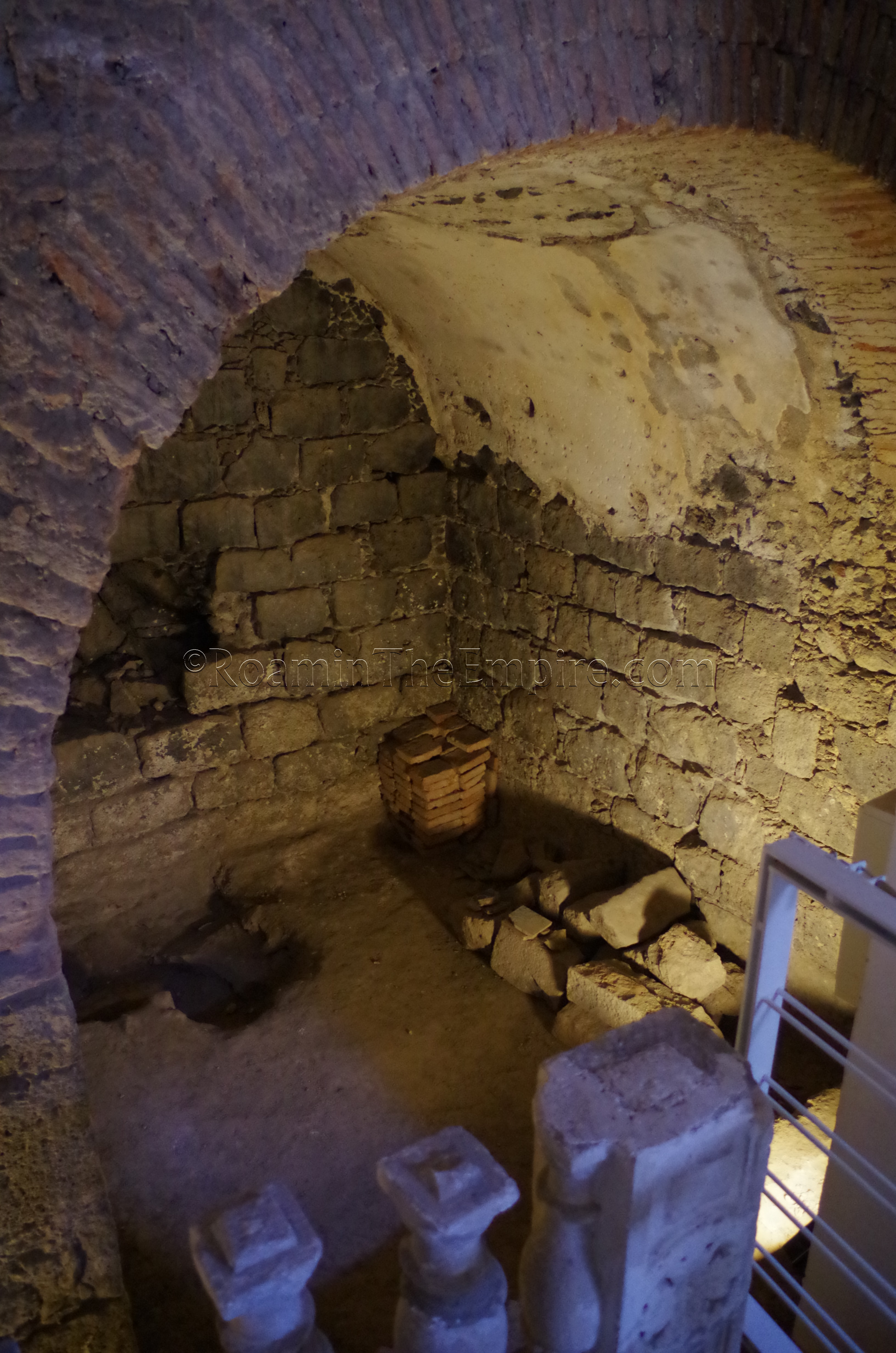
Behind the Chiesa di San Biagio o Sant’Agata alla Fornace (to the west), is the Chiesa di Sant’Agata al Carcere, the middle of three churches devoted to the martyrdom of Saint Agatha. Sant’Agata al Carcere is said to be where she was imprisoned before she was martyred in 251 CE. Located at Piazza Santo Carcere 7, the interior of the church is only accessible Thursday through Saturday from 10:00 to 12:00 and there is no admission charge. The visit is also only allowed with a guide, which, again, experiences with languages other than Italian will probably vary. The exact nature of the Roman remains here is a matter of some debate. The so-called prison of Saint Agatha is indeed dated as a Roman imperial era structure, though it was likely not an actual prison. That, as well as some other remains visible (arched niches, mosaic) in other areas of the church that are visited on the guided tour, seems to belong to some sort of monumental structure that has alternatively been interpreted as perhaps a temple or even some sort of administrative building. There is also a section of a 6th century CE Greek wall preserved below the church.
There were a few sets of remains from ancient Catana I was not able to visit while in Catania. Just north of Piazza Stesicor, on Via Sant’Euplio, is the remains of the Tempio di Sant’Euplio, a 16th century church destroyed in an allied bombin in 1943. On the grounds here is an entrance to a Roman necropolis below street level. It was not open and had no opening information or contact information to inquire about seeing the necropolis, nor could I find any online. Further north, just east of the intersection of Via Ipogeo and Via Gaetano Sanfilippo, at about Via Gaetano Sanfilippo 19, are the remains of a Roman funerary monument. I attempted to visit it, but, got a bit lost (it is quite a way out of the center of the city, 800 meters northwest of the amphitheater) trying to find it, and never made it. There doesn’t seem to be any entrance to the monument, which is behind a fence, but it does appear to be nominally visible from the street.
Sources:
Cicero, In Verrem, 4.23.
Diodorus Siculus, Bibliotheca Historica, 11.49, 11.76, 13.4-6, 14.15, 14.58-61, 16.69, 19.110, 22.8.
Livy, Ab Urbe Condita, 27.8.
Orosius, Historiae Adversus Paganos, 5.13.
Plutarch, Alcibiades, 20.
Plutarch, Dion, 58.
Plutarch, Nicias, 15-16.
Plutarch, Timoleon, 13, 30-34.
Smith, Christopher John. Sicily from Aeneas to Augustus: New Approaches in Archaeology and History. Edinburgh Univ. Press, 2007.
Smith, William. Dictionary of Greek and Roman Geography. Walton & Murray, 1870.
Stillwell, Richard, William L. MacDonald, and Marian Holland. McAllister. The Princeton Encyclopedia of Classical Sites. Princeton, NJ: Princeton U Press, 1976.
Strabo, Geographica, 5.3, 6.2.
Thucydides, Histories, 5.4, 6.4, 6.50-52. 6.63, 6.71.


